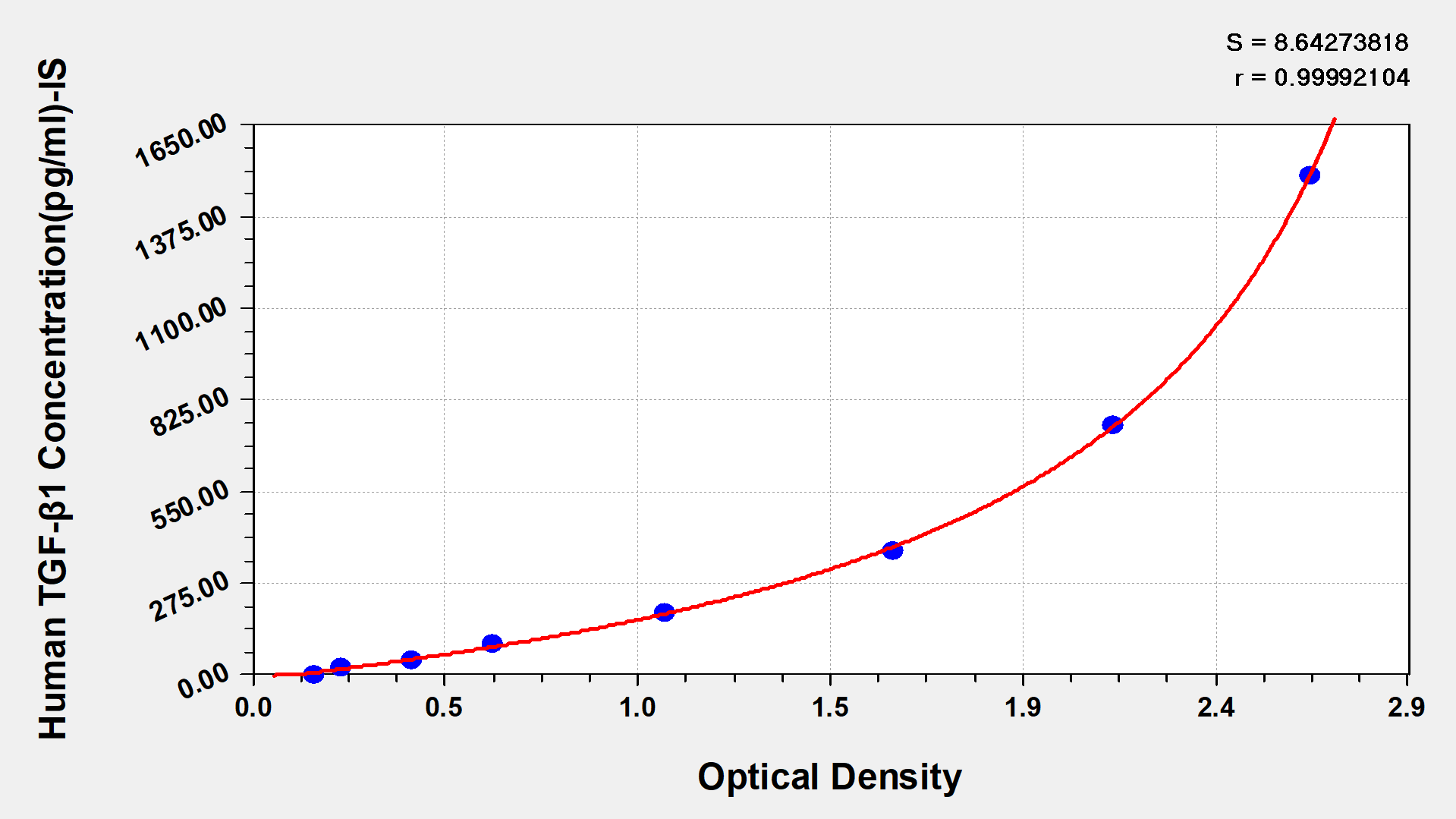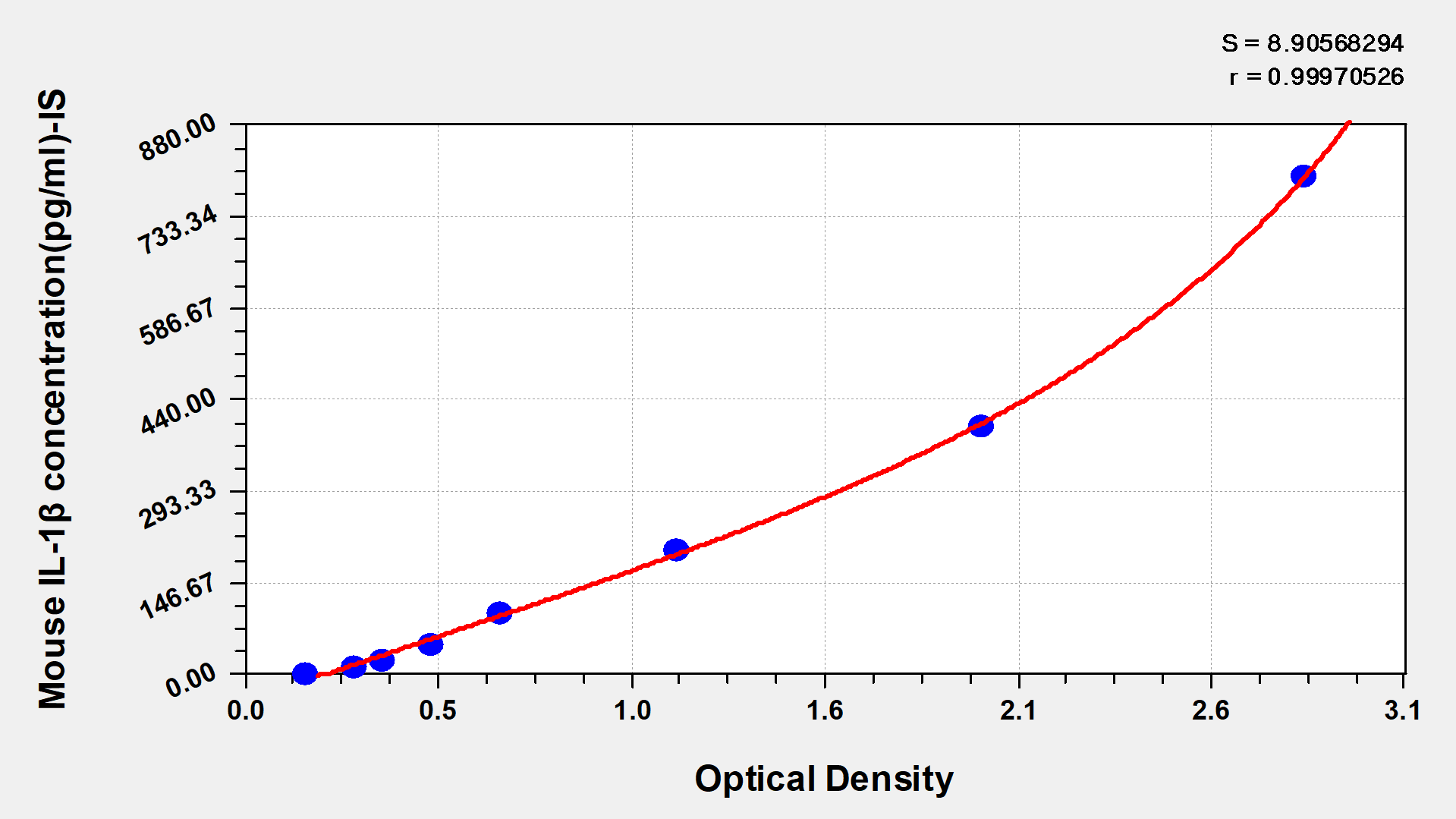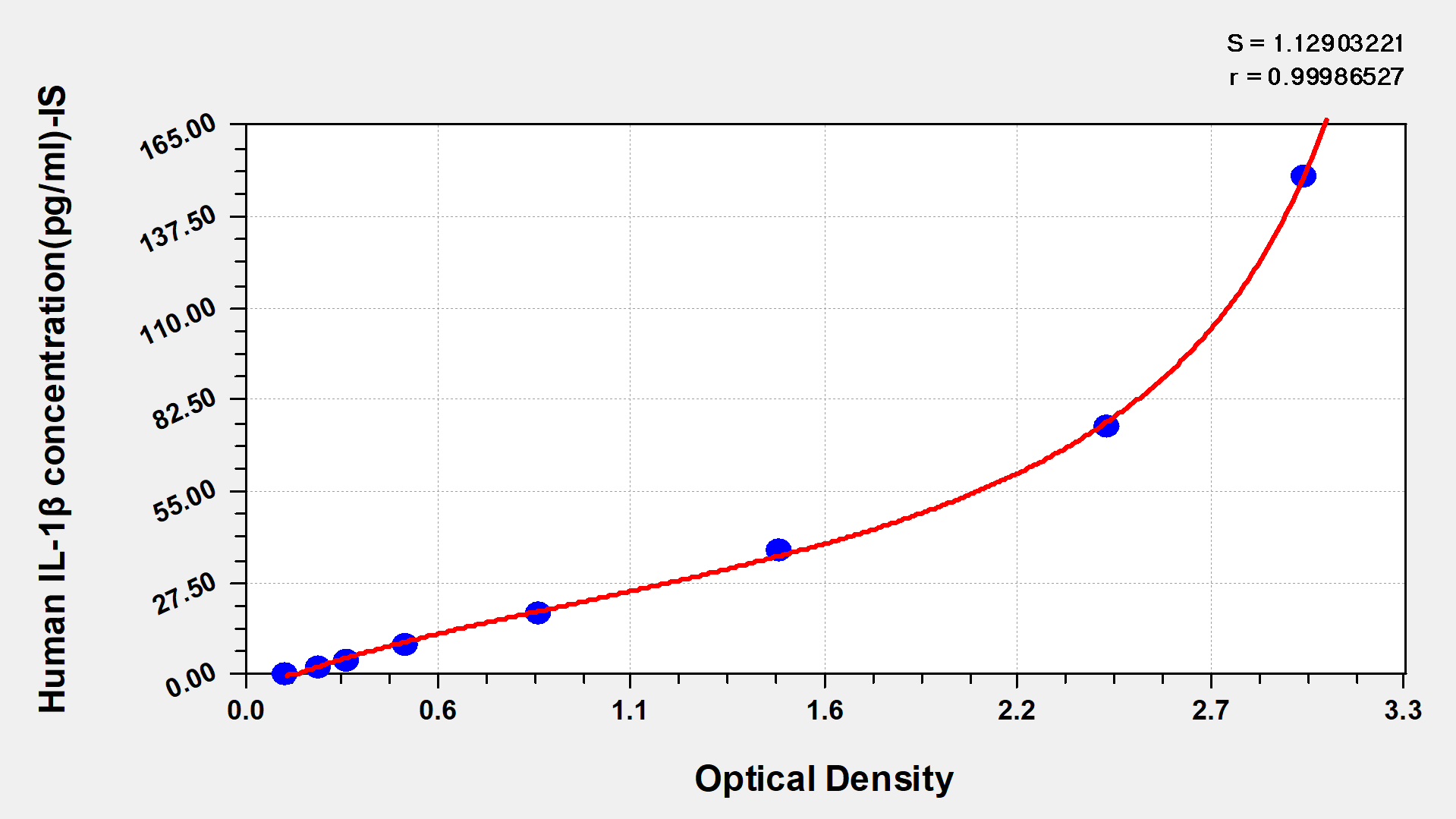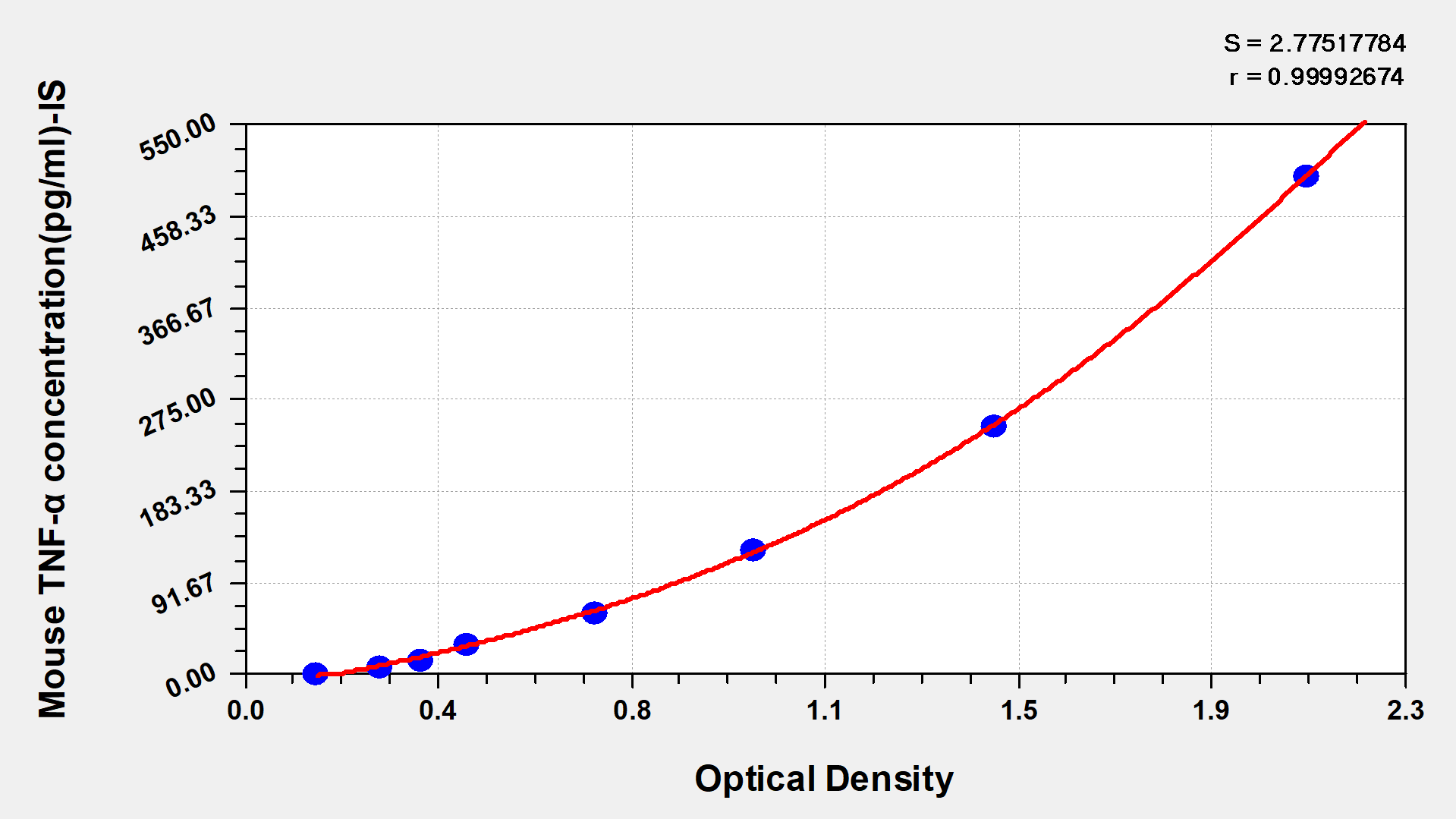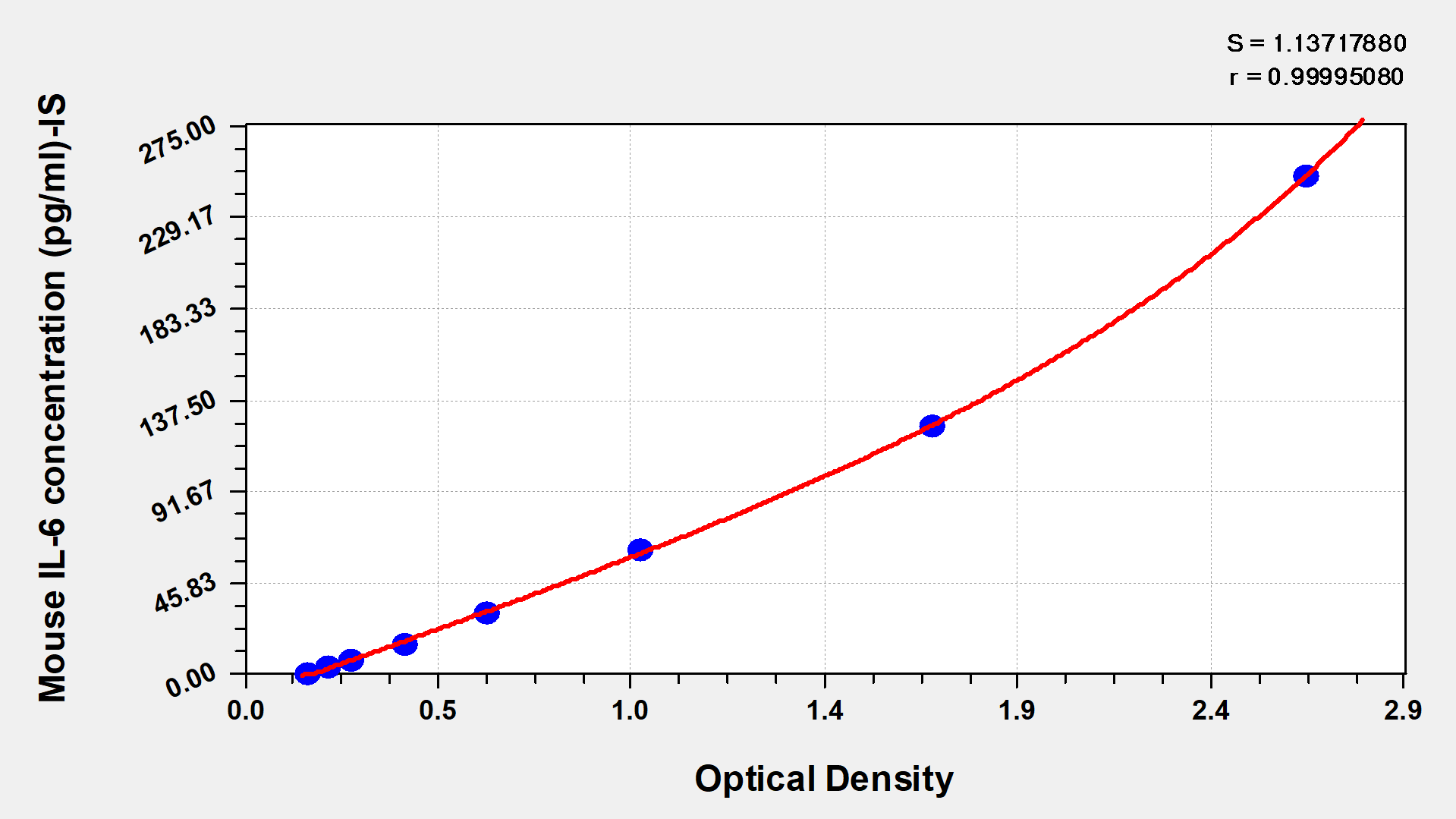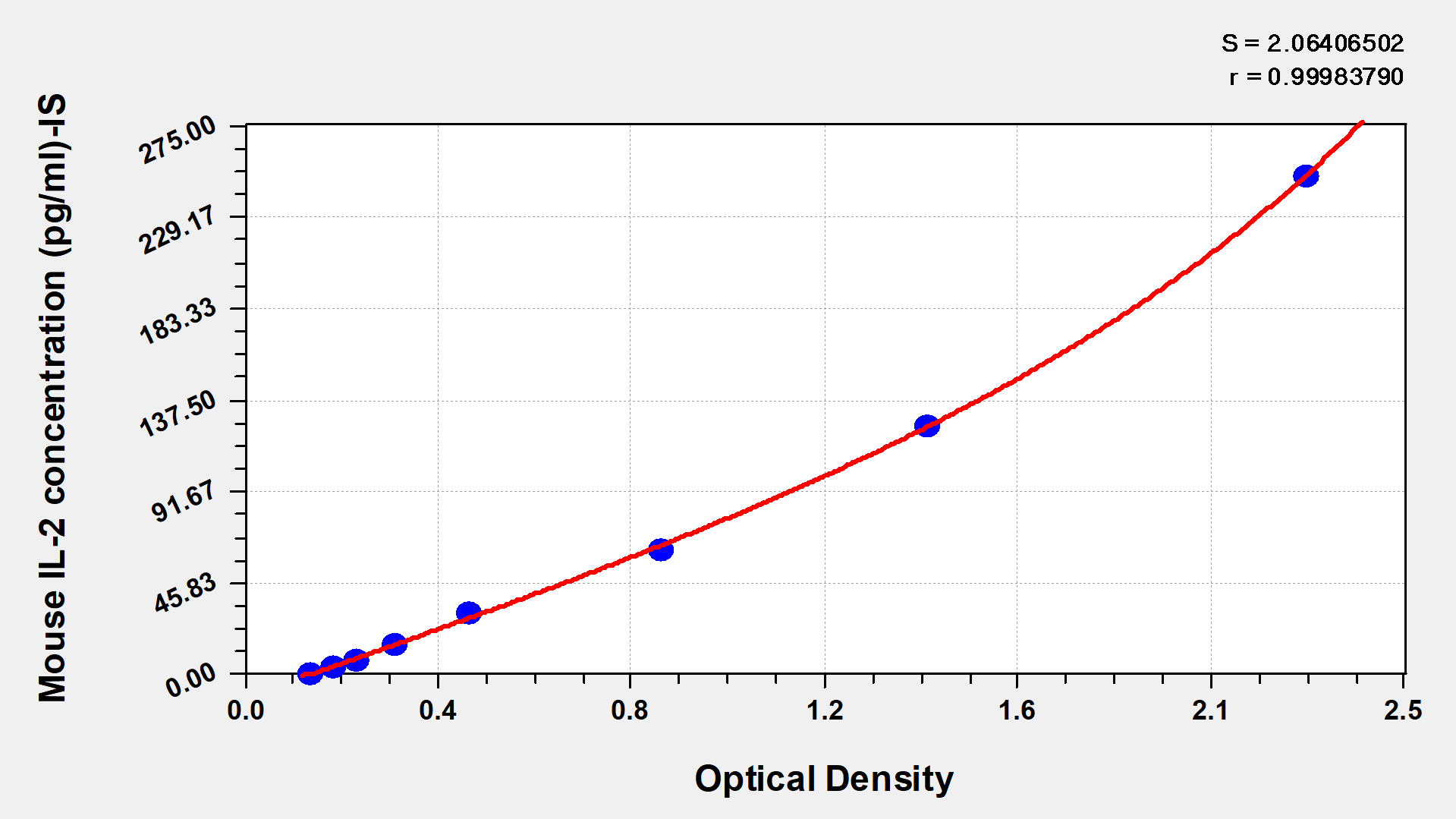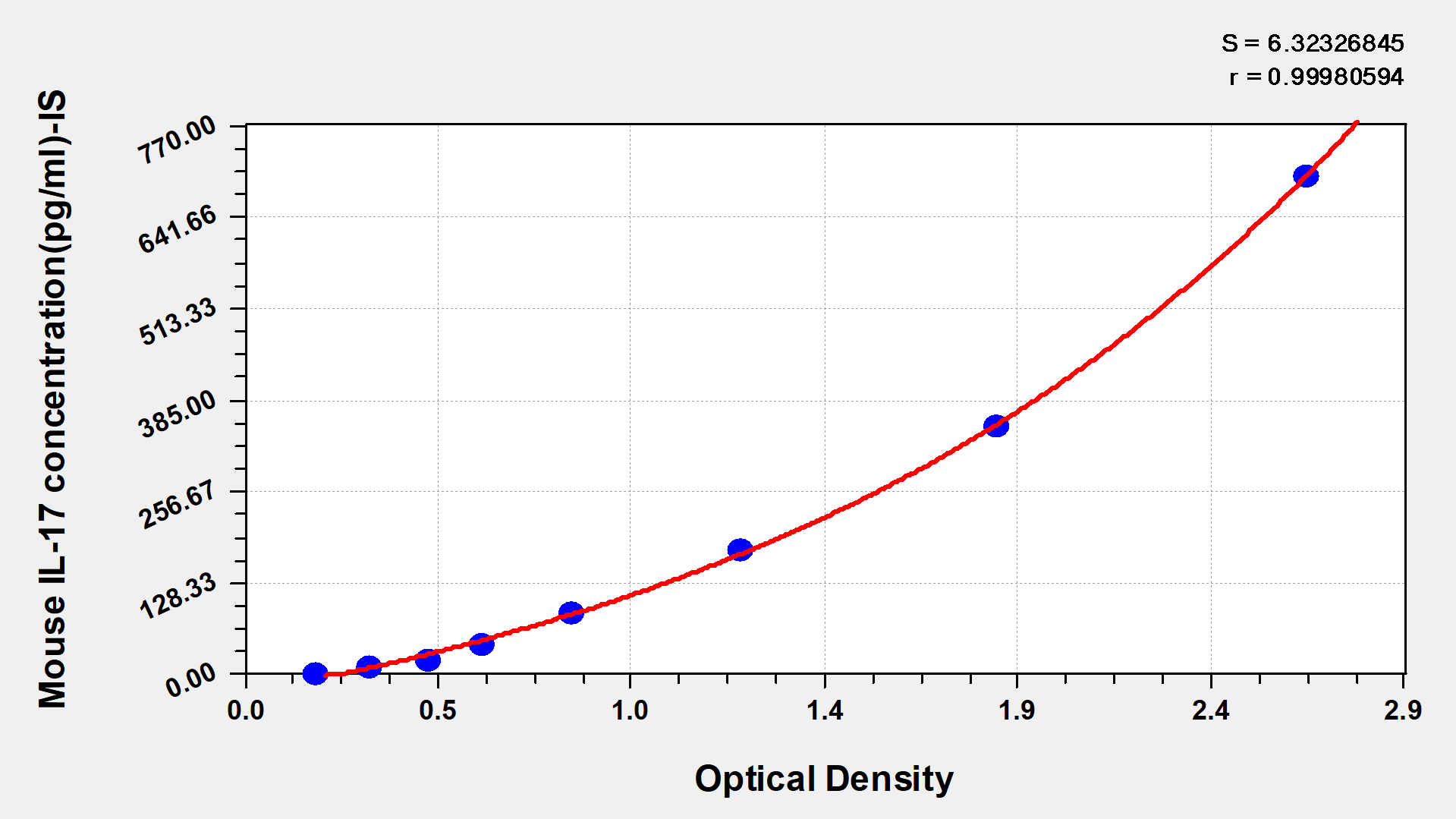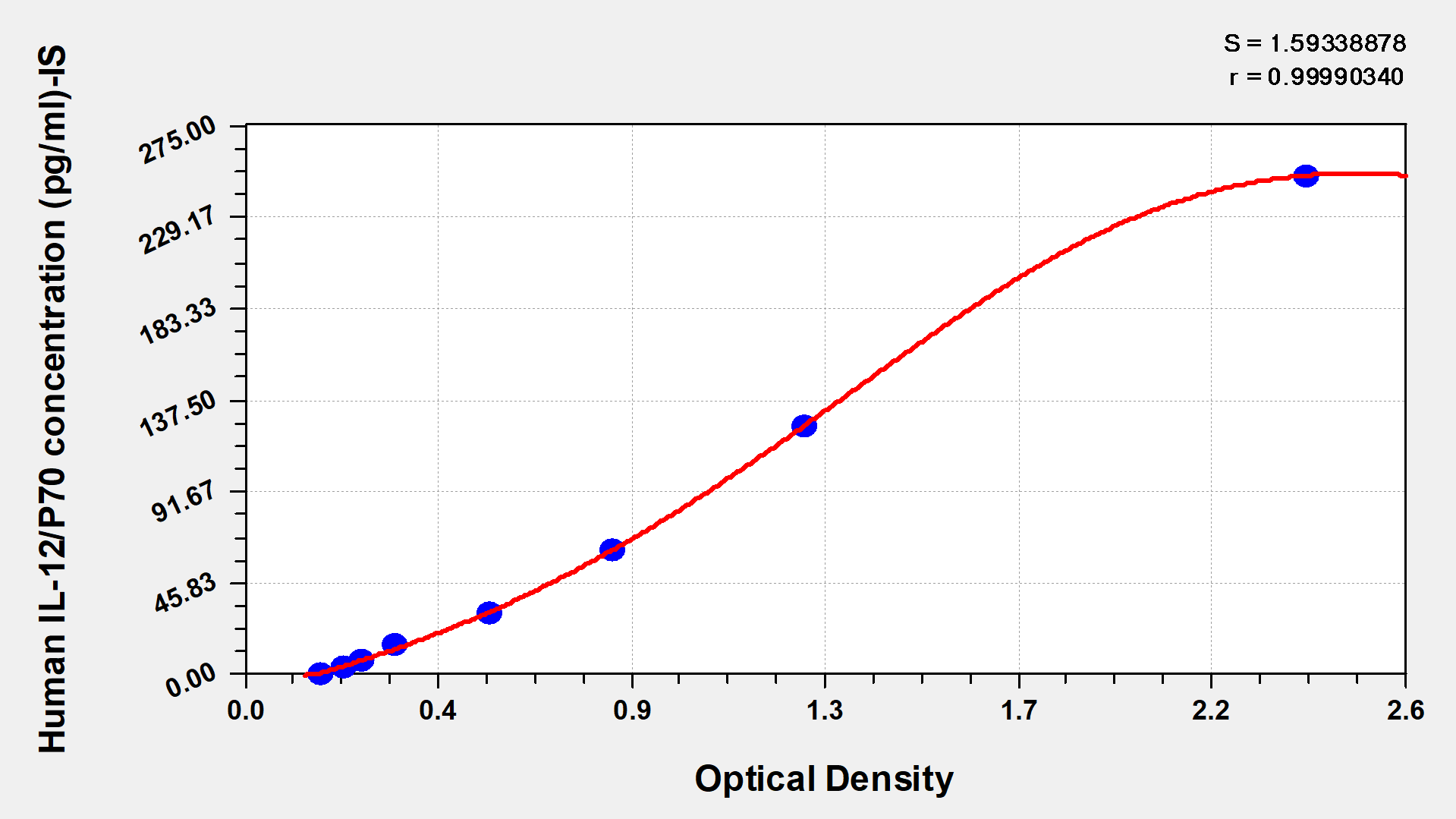-
中文名称:大鼠热休克蛋白70(HSP-70)酶联免疫试剂盒
-
货号:CSB-E08308r
-
规格:96T/48T
-
价格:¥3900/¥2500
-
其他:
产品详情
-
产品描述:CUSABIO大鼠热休克蛋白70(HSP-70)酶联免疫检测试剂盒(货号:CSB-E08308r),采用双抗体夹心法定量检测血清、血浆或组织匀浆样本中HSP-70的浓度。HSP-70作为重要的分子伴侣蛋白,在细胞应激、蛋白质折叠及保护中发挥关键作用,其表达水平与炎症反应、神经退行性病变及热休克调控机制密切相关,是研究应激相关疾病机制的重要生物标志物。试剂盒检测范围为62.5-4000 pg/mL,通过高灵敏度的抗体配对实现精准定量分析,最低检测限为62.5 pg/mL,适用于科研场景下多种生物样本的检测需求。该试剂盒可应用于热休克反应机制探索、药物干预效果评估、疾病模型(如心血管损伤、神经退行性疾病)中应激水平变化的动态监测等基础研究领域,其兼容血清、血浆及组织匀浆样本的特性为不同实验设计提供灵活选择,操作流程标准化,实验结果稳定可靠。
-
缩写:HSPA1A
-
Uniprot No.:
-
种属:Rattus norvegicus (Rat)
-
样本类型:serum, plasma, tissue homogenates
-
检测范围:62.5 pg/mL-4000 pg/mL
-
灵敏度:15.6 pg/mL
-
反应时间:1-5h
-
样本体积:50-100ul
-
检测波长:450 nm
-
研究领域:Neuroscience
-
测定原理:quantitative
-
测定方法:Sandwich
-
精密度:
Intra-assay Precision (Precision within an assay): CV%<8% Three samples of known concentration were tested twenty times on one plate to assess. Inter-assay Precision (Precision between assays): CV%<10% Three samples of known concentration were tested in twenty assays to assess. -
线性度:
To assess the linearity of the assay, samples were spiked with high concentrations of rat hSP-70 in various matrices and diluted with the Sample Diluent to produce samples with values within the dynamic range of the assay. Sample Serum(n=4) 1:100 Average % 92 Range % 88-95 1:200 Average % 103 Range % 99-107 1:400 Average % 92 Range % 86-96 1:800 Average % 98 Range % 94-101 -
回收率:
The recovery of rat hSP-70 spiked to levels throughout the range of the assay in various matrices was evaluated. Samples were diluted prior to assay as directed in the Sample Preparation section. Sample Type Average % Recovery Range Serum (n=5) 94 91-97 EDTA plasma (n=4) 95 91-98 -
标准曲线:
These standard curves are provided for demonstration only. A standard curve should be generated for each set of samples assayed. 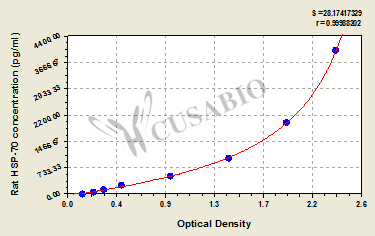
pg/ml OD1 OD2 Average Corrected 4000 2.402 2.333 2.368 2.226 2000 1.946 1.926 1.936 1.794 1000 1.422 1.433 1.428 1.286 500 0.911 0.924 0.918 0.776 250 0.477 0.491 0.484 0.342 125 0.332 0.323 0.328 0.186 62.5 0.244 0.237 0.241 0.099 0 0.143 0.141 0.142 -
数据处理:
-
货期:3-5 working days
引用文献
- Gastroprotective effect of Lycium barbarum polysaccharides and C-phyocyanin in rats with ethanol-induced gastric ulcer YZ Lian,International Journal of Biological Macromolecules,2020
- Effects of varying intensities of heat stress on neuropeptide Y and proopiomelanocortin mRNA expression in rats N Zhao,Biomedical Reports,2020
- PI3K/Akt signaling pathway and Hsp70 activate in hippocampus of rats with chronic manganese sulfate exposure HongCheng.et al,Journal of Trace Elements in Medicine and Biology,2018
- Association of BAFF and IL-17A with subphenotypes of primary Sjögren's syndrome Fengyuan Deng et al,International Journal of Rheumatic Diseases,2015
- Thoracic aorta vasoreactivity in rats under exhaustive exercise: effects of Lycium barbarum polysaccharides supplementation Zhao Z et al,J Int Soc Sports Nutr,2013
靶点详情
-
功能:Molecular chaperone implicated in a wide variety of cellular processes, including protection of the proteome from stress, folding and transport of newly synthesized polypeptides, activation of proteolysis of misfolded proteins and the formation and dissociation of protein complexes. Plays a pivotal role in the protein quality control system, ensuring the correct folding of proteins, the re-folding of misfolded proteins and controlling the targeting of proteins for subsequent degradation. This is achieved through cycles of ATP binding, ATP hydrolysis and ADP release, mediated by co-chaperones. The co-chaperones have been shown to not only regulate different steps of the ATPase cycle, but they also have an individual specificity such that one co-chaperone may promote folding of a substrate while another may promote degradation. The affinity for polypeptides is regulated by its nucleotide bound state. In the ATP-bound form, it has a low affinity for substrate proteins. However, upon hydrolysis of the ATP to ADP, it undergoes a conformational change that increases its affinity for substrate proteins. It goes through repeated cycles of ATP hydrolysis and nucleotide exchange, which permits cycles of substrate binding and release. The co-chaperones are of three types: J-domain co-chaperones such as HSP40s (stimulate ATPase hydrolysis by HSP70), the nucleotide exchange factors (NEF) such as BAG1/2/3 (facilitate conversion of HSP70 from the ADP-bound to the ATP-bound state thereby promoting substrate release), and the TPR domain chaperones such as HOPX and STUB1. Maintains protein homeostasis during cellular stress through two opposing mechanisms: protein refolding and degradation. Its acetylation/deacetylation state determines whether it functions in protein refolding or protein degradation by controlling the competitive binding of co-chaperones HOPX and STUB1. During the early stress response, the acetylated form binds to HOPX which assists in chaperone-mediated protein refolding, thereafter, it is deacetylated and binds to ubiquitin ligase STUB1 that promotes ubiquitin-mediated protein degradation. Regulates centrosome integrity during mitosis, and is required for the maintenance of a functional mitotic centrosome that supports the assembly of a bipolar mitotic spindle. Enhances STUB1-mediated SMAD3 ubiquitination and degradation and facilitates STUB1-mediated inhibition of TGF-beta signaling. Essential for STUB1-mediated ubiquitination and degradation of FOXP3 in regulatory T-cells (Treg) during inflammation. Negatively regulates heat shock-induced HSF1 transcriptional activity during the attenuation and recovery phase period of the heat shock response.
-
亚细胞定位:Cytoplasm. Nucleus. Cytoplasm, cytoskeleton, microtubule organizing center, centrosome. Secreted.
-
蛋白家族:Heat shock protein 70 family
-
数据库链接:
Most popular with customers
-
Human Transforming Growth factor β1,TGF-β1 ELISA kit
Detect Range: 23.5 pg/ml-1500 pg/ml
Sensitivity: 5.8 pg/ml
-
-
-
Mouse Tumor necrosis factor α,TNF-α ELISA Kit
Detect Range: 7.8 pg/ml-500 pg/ml
Sensitivity: 1.95 pg/ml
-
-
-
-



